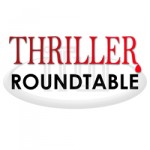

January 12 – 18: “Have the lines blurred too much between thrillers and mysteries?”
 Have the lines blurred too much between thrillers and mysteries? This week ITW Members Bill Loehfelm, Jeanne Matthews, Thomas Perry, L. T. Graham, Lisa Von Biela, Jerry Hatchett and Jean Heller share their insights into this important distinction between two of literature’s most popular genres.
Have the lines blurred too much between thrillers and mysteries? This week ITW Members Bill Loehfelm, Jeanne Matthews, Thomas Perry, L. T. Graham, Lisa Von Biela, Jerry Hatchett and Jean Heller share their insights into this important distinction between two of literature’s most popular genres.
~~~~~
 Jeanne Matthews is the author of the Dinah Pelerin international mystery series including BONES OF CONTENTION, BET YOUR BONES, BONEREAPERS, and HER BOYFRIEND’S BONES. Originally from Atlanta, Georgia, the author currently lives in Renton, Washington.
Jeanne Matthews is the author of the Dinah Pelerin international mystery series including BONES OF CONTENTION, BET YOUR BONES, BONEREAPERS, and HER BOYFRIEND’S BONES. Originally from Atlanta, Georgia, the author currently lives in Renton, Washington.
 Most of Jean Heller’s career was as an investigative and projects reporter and editor in New York City, Washington, D.C. and St. Petersburg Florida. Her career as a novelist began in the 1990s with the publication of the thrillers, “Maximum Impact” and “Handyman” by St. Martin’s Press. Then life intervened and postponed her new book, “The Someday File,” to publication in late 2014. Jean has won the Worth Bingham Prize, the Polk Award, and is an eight-time Pulitzer Prize nominee.
Most of Jean Heller’s career was as an investigative and projects reporter and editor in New York City, Washington, D.C. and St. Petersburg Florida. Her career as a novelist began in the 1990s with the publication of the thrillers, “Maximum Impact” and “Handyman” by St. Martin’s Press. Then life intervened and postponed her new book, “The Someday File,” to publication in late 2014. Jean has won the Worth Bingham Prize, the Polk Award, and is an eight-time Pulitzer Prize nominee.
 Bill Loehfelm is the author of five novels, including The Devil in Her Way, and The Devil She Knows, the first two books in the Maureen Coughlin crime fiction series, as well as the stand-alones, Bloodroot, and Fresh Kills. He lives in New Orleans with his wife, the writer AC Lambeth, and plays drums in a rock-and-roll cover band. Look for Doing the Devil’s Work, the newest Maureen Coughlin novel, in January 2015.
Bill Loehfelm is the author of five novels, including The Devil in Her Way, and The Devil She Knows, the first two books in the Maureen Coughlin crime fiction series, as well as the stand-alones, Bloodroot, and Fresh Kills. He lives in New Orleans with his wife, the writer AC Lambeth, and plays drums in a rock-and-roll cover band. Look for Doing the Devil’s Work, the newest Maureen Coughlin novel, in January 2015.
 Thomas Perry is the bestselling author of twenty-two novels. His books have won a number of awards, including the Edgar, the Barry, and the Gumshoe. His METZGER’S DOG, STRIP, and THE INFORMANT were all New York Times Notable Crime Books.
Thomas Perry is the bestselling author of twenty-two novels. His books have won a number of awards, including the Edgar, the Barry, and the Gumshoe. His METZGER’S DOG, STRIP, and THE INFORMANT were all New York Times Notable Crime Books.
 Lisa von Biela worked in Information Technology for 25 years, then dropped out to attend the University of Minnesota Law School, graduating magna cum laude in 2009. She now practices law in Seattle, Washington. Lisa began writing short, dark fiction just after the turn of the century. Her first publication appeared in The Edge in 2002. She went on to publish a number of short works in various small press venues, including Gothic.net, Twilight Times, Dark Animus, AfterburnSF, and more. She is the author of the novels The Genesis Code and The Janus Legacy, as well as the novella Ash and Bone.
Lisa von Biela worked in Information Technology for 25 years, then dropped out to attend the University of Minnesota Law School, graduating magna cum laude in 2009. She now practices law in Seattle, Washington. Lisa began writing short, dark fiction just after the turn of the century. Her first publication appeared in The Edge in 2002. She went on to publish a number of short works in various small press venues, including Gothic.net, Twilight Times, Dark Animus, AfterburnSF, and more. She is the author of the novels The Genesis Code and The Janus Legacy, as well as the novella Ash and Bone.
 Jerry Hatchett grew up in the creatively fertile Mississippi Delta, and loves to craft thrilling tales that the reader can’t put down. He writes from near Houston, Texas.
Jerry Hatchett grew up in the creatively fertile Mississippi Delta, and loves to craft thrilling tales that the reader can’t put down. He writes from near Houston, Texas.
 L. T. Graham is the pen name of a New England-based suspense writer who is the author of several novels. Graham is currently at work on the next Detective Anthony Walker novel.
L. T. Graham is the pen name of a New England-based suspense writer who is the author of several novels. Graham is currently at work on the next Detective Anthony Walker novel.
- LAST GIRL MISSING with K.L. Murphy - July 25, 2024
- CHILD OF DUST with Yigal Zur - July 25, 2024
- THE RAVENWOOD CONSPIRACY with Michael Siverling - July 19, 2024
